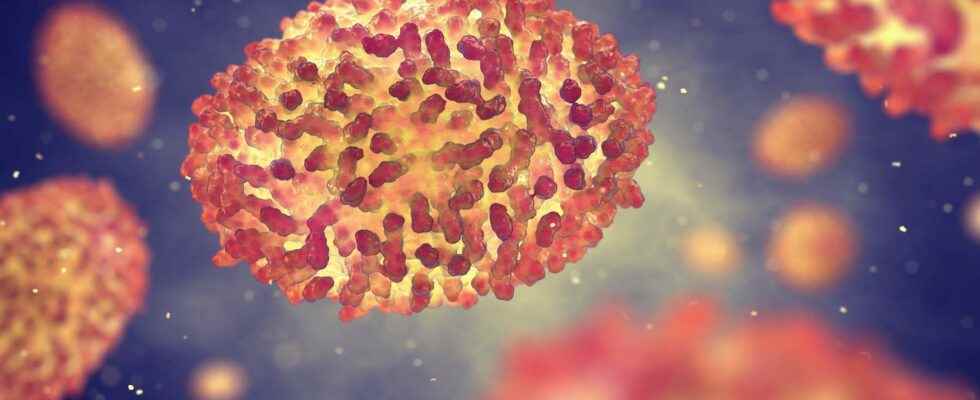The monkeypox virus was until now only present sporadically in Central and West Africa, near tropical rainforests. In recent weeks, several hundred cases have been described in urban areas and in countries usually not affected by the virus. What do we know about this virus? Is a global pandemic possible?
You will also be interested
[EN VIDÉO] The defining pandemics of the 20th and 21st centuries In this video, go back in time to discover the pandemics that have marked our history over the past hundred years. Influenza viruses, Ebola, or HIV, they have infected the whole world.
Monkey pox or monkey pox is an infectious disease caused by an enveloped virus DNA double stranded. This is transmitted to humans via infected animals, most often rodents. The contamination occurs through direct contact with blood, liquids biological or cutaneous lesions or by the mucous membranes. Humans can infect each other through close and prolonged contact with secretions breathing, skin lesions or objects. The virus is therefore much less contagious that the Omicron variant of SARS-CoV-2.
Is a new pandemic to be feared?
The first case of human contamination was described in 1970 in Central Africa. All the other cases identified since in Central Africa or West Africa have occurred in rural areas, around tropical forests. In 2003, a epidemic monkeypox has declared itself in the USA (70 cases). The intermediate hosts were dogs grassland having stayed with savanna and dormice cricetomas from Ghana. From 2018 to 2021, several human cases have been reported in travelers from Nigeria. In May 2022, several hundred cases were communicated in countries not endemic. For the moment, theWorld Health Organization (WHO) wants to be reassuring and not afraid of new pandemic.
What are the symptoms ?
The symptoms resemble those of human smallpox although they are less severe. During the first five days, the patient has feversevere headaches, lymph nodesof the pains muscles, great fatigue. L’skin rash then occurs. It is localized mainly on the face, the oral mucosa, the palms of the hands and the soles of the feet. The lesions evolve then heal spontaneously most of the time in 2 to 4 weeks. In fragile subjects (children, immunocompromised), the disease can be serious. The fatality rate is 3 to 6%.
Is the human smallpox vaccine protective?
Following the eradication of smallpox from the world in 1980, there is no longer a campaign of smallpox vaccination. This vaccine also protected against monkeypox but is no longer available. A newer vaccine was approved in 2019. It is currently available only for people at risk of exposure such as laboratory personnel and health professionals.
What treatments are available?
Currently available treatments aim to relieve symptoms and prevent complications. In 2022, a new molecule, tecovirimat, has been approved for the treatment of monkeypox. People in contact with suspected infected patients should apply the usual infection control precautions.
Interested in what you just read?
Subscribe to the newsletter Health question of the week : our answer to a question you ask yourself (more or less secretly). All our newsletters
